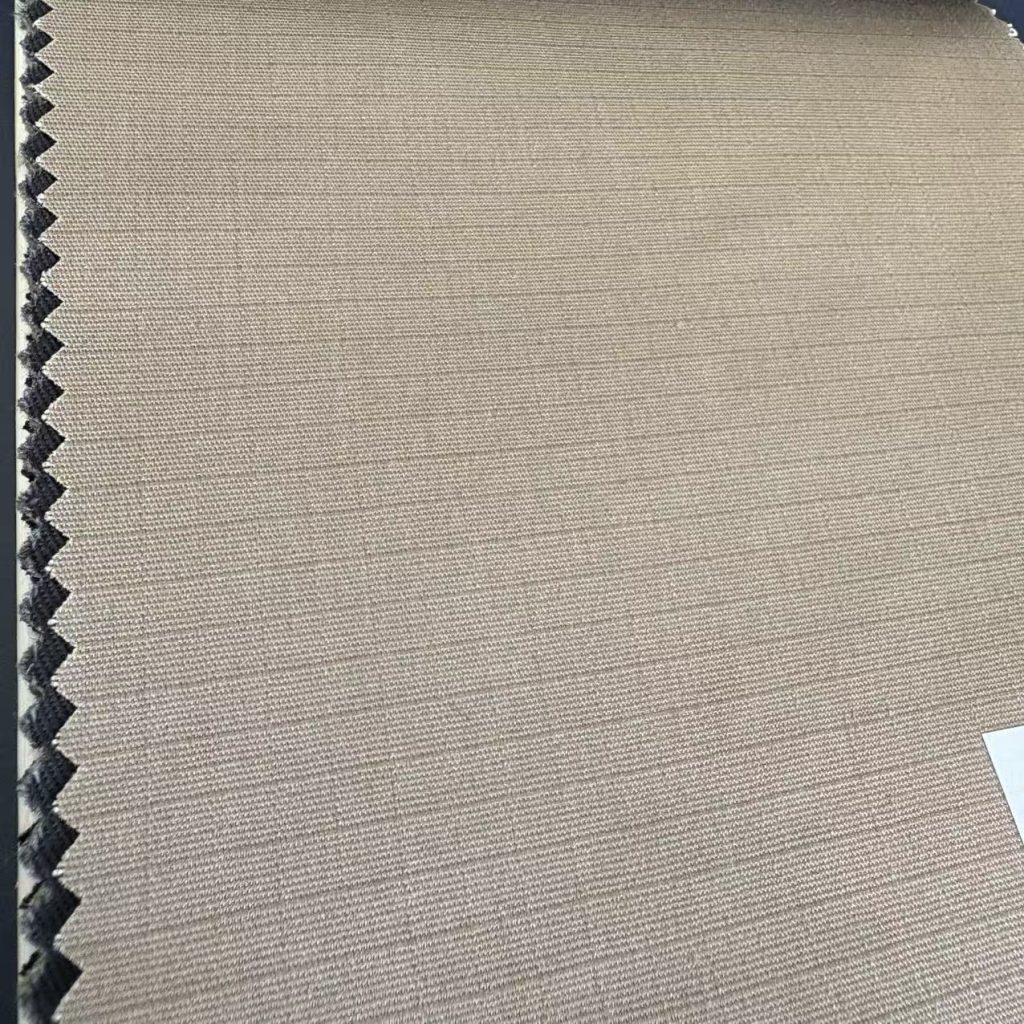As someone who works closely with workwear brands and garment factories, I often hear the same question:
“Can ripstop fabrics handle repeated industrial washing?”
The short answer is yes—but only if the fabric is engineered for it.
Industrial laundry is far more aggressive than home washing. High temperatures, strong chemicals, and heavy mechanical action can slowly change the look and performance of any fabric. Ripstop is no exception, and because of its unique grid structure, it behaves differently under these conditions.
In this article, I want to explain these differences in a clear, practical way—so that you can choose the right ripstop fabric for rental programs, uniforms, and heavy-duty workwear.
1. Why This Topic Matters for Workwear Brands and Rental Laundries
Ripstop has always been a favorite for workwear pants, jackets, and utility shirts. It’s strong, modern-looking, and holds up well in demanding environments.
But industrial laundry adds another layer of challenge.
Workwear used in construction, logistics, automotive, and manufacturing might go through 50–100+ wash cycles. Each cycle affects the fabric’s:
- shrinkage
- appearance
- color stability
- comfort and fit
Before we dive deeper, if you’re new to industrial laundry, this guide may help:
👉 Understanding ISO 15797 Industrial Laundering Standards
2. A Quick Reminder: What Makes Ripstop Different?
Ripstop is woven with reinforced grid yarns—stronger yarns placed at regular intervals.
These grid yarns give ripstop the famous “square pattern” and help prevent tears from spreading.
Common constructions for workwear include:
- 100% cotton ripstop
- 65/35 poly-cotton ripstop
- mechanical stretch ripstop
- spandex or T400 stretch ripstop
This structure performs beautifully in the field, but the grid also reacts differently under repeated washing, heat, and friction.
3. Shrinkage: How Industrial Laundry Changes Ripstop Dimensions
3.1 Why shrinkage appears “more obvious” on ripstop
Because ripstop has two types of yarns—base yarns and thicker grid yarns—they sometimes shrink at slightly different rates. This can lead to:
- grids that look tighter or more “raised”
- a firmer handfeel
- subtle garment shape changes (especially in the thigh, knee, or seat area)
This doesn’t mean the fabric is low quality—it’s simply how grid structures respond to stress.
3.2 Fiber composition matters
Based on what I’ve seen in production and customer testing:
-
100% cotton ripstop
Shrinkage is the highest, especially under high-temperature washing. -
65/35 poly-cotton ripstop
More stable; less overall shrinkage; better suited to rental programs. -
Mechanical stretch / T400 / Sorona blends
Stable if engineered well and dyed properly. -
Spandex stretch ripstop
Can lose some stretch power after repeated chemical exposure.
If you’re curious about the differences between cotton and poly-cotton ripstop, here’s a comparison I wrote:
👉 Polyester-Cotton vs Cotton Ripstop
3.3 What buyers should specify
If your product will go through industrial laundry, make sure to request:
- shrinkage data after ISO 15797 cycles
- test reports for both fabric and finished garments
- realistic expectations (for example, ≤ 3–5% after 50 cycles is common)
4. Appearance: Grid Distortion, Seam Puckering & Surface Changes
4.1 Grid distortion
Repeated washing can sometimes make the grid appear:
- more obvious
- slightly uneven
- slightly twisted in a few spots
This is usually due to the different tension in grid yarns vs base yarns.
4.2 Seam puckering
Ripstop’s thicker grid yarns can increase the chance of seam puckering after many washes.
This is affected by:
- sewing thread
- stitch density
- panel shape
- heat in drying tunnels
A good garment factory will adjust stitching tension and seam construction to avoid visible puckering.
4.3 Surface wear
Areas that rub against machinery, seats, or tool belts can show:
- light abrasion
- fuzzing or slight pilling
- grid yarn wear
This is normal across all workwear fabrics—ripstop just shows it differently because of the square pattern.
If you want a bigger picture of ripstop applications in workwear, here’s a guide:
👉 Ripstop Fabric Workwear Applications
5. Colorfastness: Industrial Laundry vs Dark Ripstop Colors
Dark shades like navy, charcoal, and black are always more sensitive under industrial washing.
For ripstop, two things happen:
- Grid yarns sometimes show wear sooner
- Moisture + friction = higher risk of wet rubbing issues
If you need a deeper explanation, I wrote a full article on dark ripstop colorfastness and wet rubbing problems.
External professional reference:
👉 American Association of Textile Chemists and Colorists (AATCC): https://www.aatcc.org/
👉 Textile rental testing info from European Textile Services Association (ETSA): https://www.textileservices.eu/
6. Practical Checklist for Using Ripstop in Industrial Laundry Programs
Here’s a simple checklist based on real projects I’ve worked on:
- Confirm composition (cotton / PC / stretch)
- Check GSM and weave spec
- Ask for ISO 15797 shrinkage test
- Review appearance after washed garment samples
- Check colorfastness levels (especially wet rubbing)
- Confirm “after X washes” performance—not just initial test data
- For stretch ripstop, check stretch recovery after washing
These steps save many headaches down the line.
7. How I Develop Ripstop Fabrics for Industrial Laundry Programs
When we develop ripstop for heavy-duty uniforms, we focus on:
- choosing stable yarns
- weaving a balanced grid
- using double-bath continuous dyeing for better color and shrinkage control
- adjusting dye recipes based on customer feedback
- washing-cycle testing before final approval
This is why our PC ripstop and cotton ripstop fabrics are widely used in Europe and Australia for workwear and rental garments.
8. Conclusion
Ripstop is strong, reliable, and great for workwear—but industrial laundry puts it to the test.
If the construction, dyeing, and finishing are done correctly, ripstop can perform beautifully throughout many wash cycles.
If you are developing workwear that will enter a rental or industrial laundry program, feel free to reach out. I’m always happy to share fabric samples or discuss technical details.
📩 sales@ripstopfabric.com

